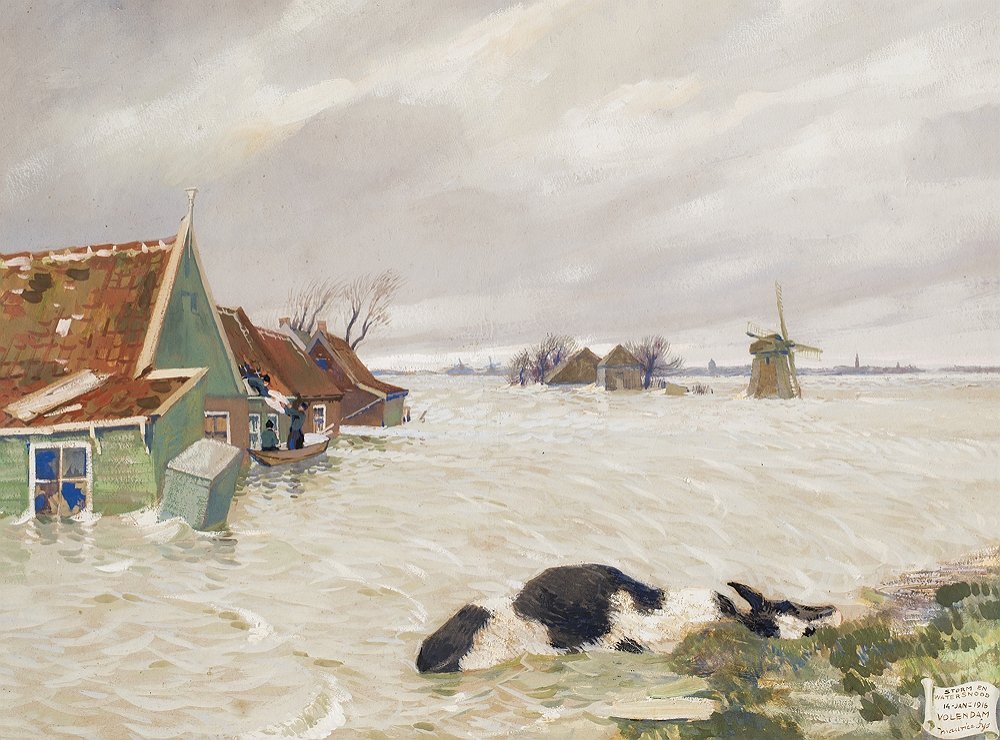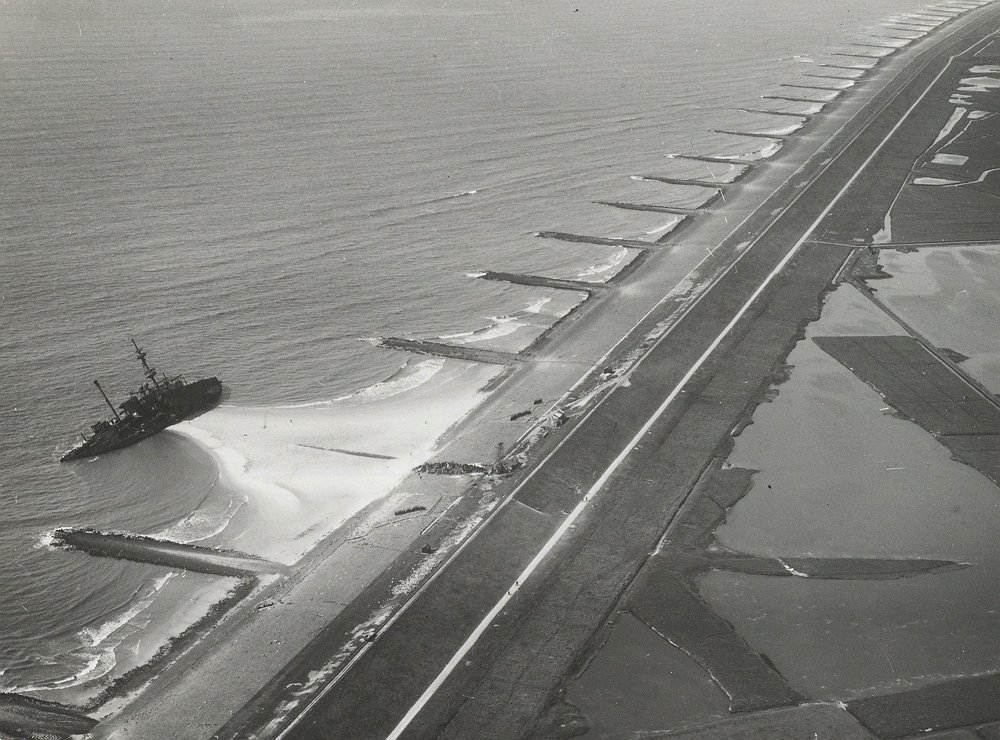Historical lectures
Even in the past, the topic of extreme weather played a major role. Our historian Diederik Aten takes us back in time. On November 5, Diederik talks about the great flood in Waterland/Zaanstreek in 1916 at Het Weeshuis in Monnickendam and on November 26, he holds this lecture again at Gemaal Kadoelen in Amsterdam-Noord. On November 12 he will talk about the seawall at Petten in historical perspective at HHNK in Heerhugowaard.


The water wolf in Waterland/Zaanstreek
On the night of January 13-14, 1916, an unprecedentedly heavy storm hit the Zuiderzee region. The waves smashed right across the island of Marken. Sixteen people drowned there on the night of the storm. Moreover, the dikes broke and all of Waterland, large parts of the Zaan region and almost the entire Anna Paulowna polder disappeared under the salt water.
The lecture focuses on the events in Waterland/Zaanstreek. There, thousands of people fled with all their possessions when the water came. Emergency shelter had to be organized for these refugees. The same applied to livestock. Often the churches located slightly higher up were used as stables. But the cows could not stay there. Meanwhile, hard work was being done to close the breaches. Although that work had the highest priority, it took more than two months before the dikes were closed again. Then the flooded area had to be drained again. Only on July 10 was the last flooded polder near Broek in Waterland dry again. The damage was enormous. By then the discussions on the question of blame were in full swing. During the lecture all these issues will be discussed under the motto 'The Netherlands, Aeternitate Vigila, always watch out!
- Nov. 5, 2025, Het Weeshuis, Weezenland 16, Monnickendam (full)
- November 26, 2025, Kadoelen pumping station in Amsterdam-North, Landsmeerderdijk 213, Amsterdam
Hondsbossche Seawall six centuries 'weak link'
The spectacular improvement of the Hondsbossche Seawall near Petten in 2014-2015 attracted a lot of attention. The old dike of basalt, asphalt and concrete was the last "weak link" in our North Sea coast and was then provided with a wide sandy beach and row of dunes. The area was even given a new name: Hondsbossche Duinen.
However, closer inspection reveals that the problems with the coast at Petten are age-old news. In 1421, things went completely wrong here and the sea smashed through the weak dunes near the village. According to old chronicles, 400 people perished in the waves. Since then, the weak link at Petten has been worked on continuously. Really all possible techniques of coastal defense have been applied here. Yet sometimes it didn't come close. During a storm in the autumn of 1792 it even looked so critical that the secretary-treasurer of the water board responsible took to his legs. During the lecture we will follow the developments closely on the basis of many old Maps, prints and photographs. This creates a fascinating picture of the enormous dynamics of our coast.
- Nov. 12, 2025, Hoogheemraadschap Hollands Noorderkwartier, Stationsplein 136, Heerhugowaard
Start time
Walk-in is at 1 p.m. these afternoons. The lecture starts at 1:30 p.m. and lasts until approximately 3:30 p.m. There is a limited number of seats available per lecture, full=full. Attendance is by order of registration.
Does it turn out after registration that you cannot attend the lecture after all? Please send an email to campagnes@hhnk.nl. Then we can open the place for someone else.